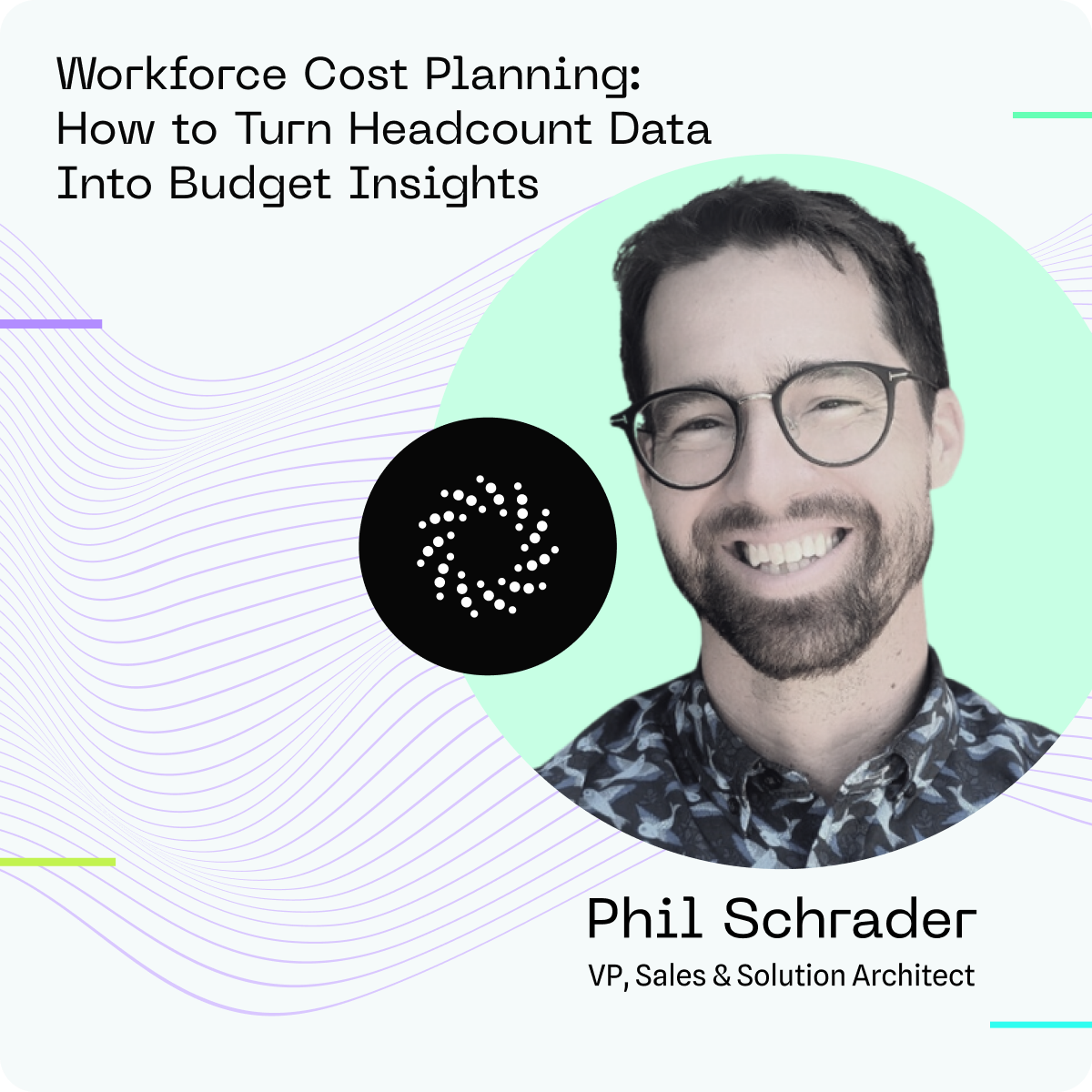Turning headcount data into actionable budget insights can feel like magic, especially when you're trying to align people investments with changing business needs. While finance teams often lead budgeting, HR and People Analytics teams are uniquely positioned to bring the headcount context that makes workforce cost planning smarter and more responsive.
That’s where cost allocation comes in. By understanding how workforce costs are distributed across departments, projects, or roles, you gain sharper insight into how labor impacts operations and strategy, not just the bottom line. It’s not just about financial reporting; it’s about supporting better decisions around hiring, planning, and prioritization.
As Phil demonstrates in the video above, One Model simplifies this process using our flexible data orchestration model. Whether you're answering budget questions, supporting workforce planning, or enabling leadership with better insights, our People Data Platform helps you connect the dots.
Why Headcount Alone Isn’t Enough for Budget Planning
It is no longer enough to get a holistic cost allocation from your headcount. Organizations across the globe need to be able to slice and dice their data to really understand how those costs are changing over time and how to best build a thriving workforce. Traditional views showing headcount over time are excellent starters, but the main course? That's translating those numbers into actionable cost insights.
After all, understanding not just the size but also the cost of your workforce over time is the key to informed decision-making for both finance and operations teams. For example, slicing and dicing dynamic cost allocation over time with a per-day breakout based on total days in month, filtered by department, supervisor hierarchy level, or length of time employed can lead to insights that can change policy or articulate critical headcount needs.
How One Model Translates Headcount into Cost Allocation
One Model possesses unique capabilities that can transform your traditional headcount chart into a sophisticated cost analysis tool. What makes us unique? It all has to do with the data model.
Once your data is modeled, you gain access to a variety of metrics that you can use as is or modify to fit your specific business needs. Diving into your compensation grouping of metrics, you can replace the “headcount, end of period” metric with “headcount, beginning of period” or append it with the “average salary, end of period” metric.
Delving deeper, the real magic happens as One Model enables you to convert that average salary into a robust cost allocation strategy. With the dynamic "compensation cost daily allocation" metric at your disposal, it's like having a personal assistant that adjusts effortlessly to varying time durations, including accommodating leap years.
Furthermore, One Model recognizes the fluctuations in costs, especially during shorter months or leap years, ensuring a more precise and insightful view of your financial landscape. This capability allows you to make more informed decisions and gain a deeper understanding of your organization's financial dynamics.
Drilling Into Workforce Cost Segments by Team, Time, and Tenure
Each organization is akin to a mosaic, with numerous sections and subdivisions. With One Model, you can delve into each segment, examining the cost allocation intricacies at every level. The insights gleaned can empower both finance and operations professionals, offering clarity in strategy and resource allocation.
Why Overhead Allocation Matters for Finance and HR Leaders
Cost allocation is crucial for various reasons in business and financial management. Here are four key reasons why it's important to pay attention to cost allocation:
Fairness and Equity
Overhead allocation ensures that costs are distributed fairly among different departments, products, or projects. This fairness is essential for budget allocation and growth in each department.
Performance Measurement
Allocating costs accurately allows for better measurement of the performance of different departments or business segments. By attributing costs to specific activities, it becomes easier to identify areas of inefficiency and make necessary improvements.
Profitability Analysis
Cost allocation helps in determining the profitability of products, services, or business units. This information is invaluable for making strategic decisions about resource allocation, product pricing, and business expansion. However, read our other considerations when breaking down revenue in our average revenue per employee blog.
Resource Allocation
When costs are allocated appropriately, organizations can allocate resources more effectively. It helps in identifying where additional resources are needed and where resources might be overallocated, leading to cost savings.
Visualizing Workforce Cost Allocation Over Time
One Model lets you visualize your cost allocation journey over time through detailed charts. While this can present a plethora of data, each data point offers invaluable insights. For those who prefer a more structured representation, a tabulated view can provide clarity.
All you need to do is create a data set that shows the amount of cost to allocate, along with the start and end dates of that allocation. From current headcount to cost allocation for recruiting, the process to get the answer is the same. For example, if you spent $10,000 on job advertisements on LinkedIn from Jan. 1, 2018, to Dec. 31, 2018, One Model can efficiently allocate that spend per day throughout the year.
This becomes very useful when combined with other metrics over periods of time. For example, I can compare what I'm spending on LinkedIn with the number of applications I receive from LinkedIn during that period. This yields a "Cost Per Application" metric that I can use to compare the effectiveness of LinkedIn relative to other sources.
The Takeaway: Smarter Workforce Cost Planning Starts Here
If the daunting task of juggling countless spreadsheets, numbers, and formulas sounds all too familiar, there's a better way. One Model is designed to transform the perplexing world of cost allocation and overhead allocation and creating a tailored cost allocation plan into a more straightforward, efficient process.
Tired of managing cost allocation through spreadsheets and guesswork?
One Model simplifies workforce cost planning with smart metrics and actionable insights.


